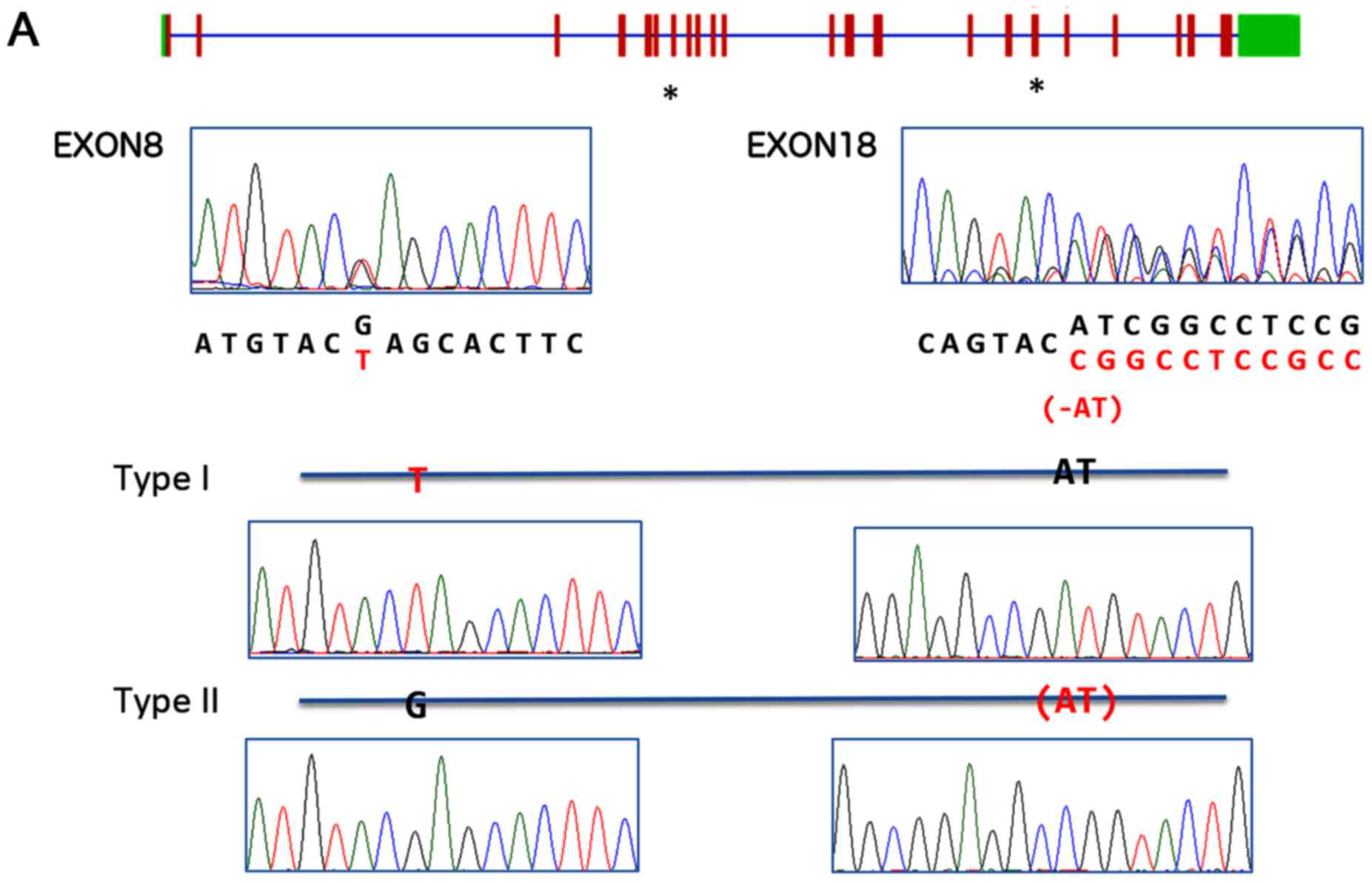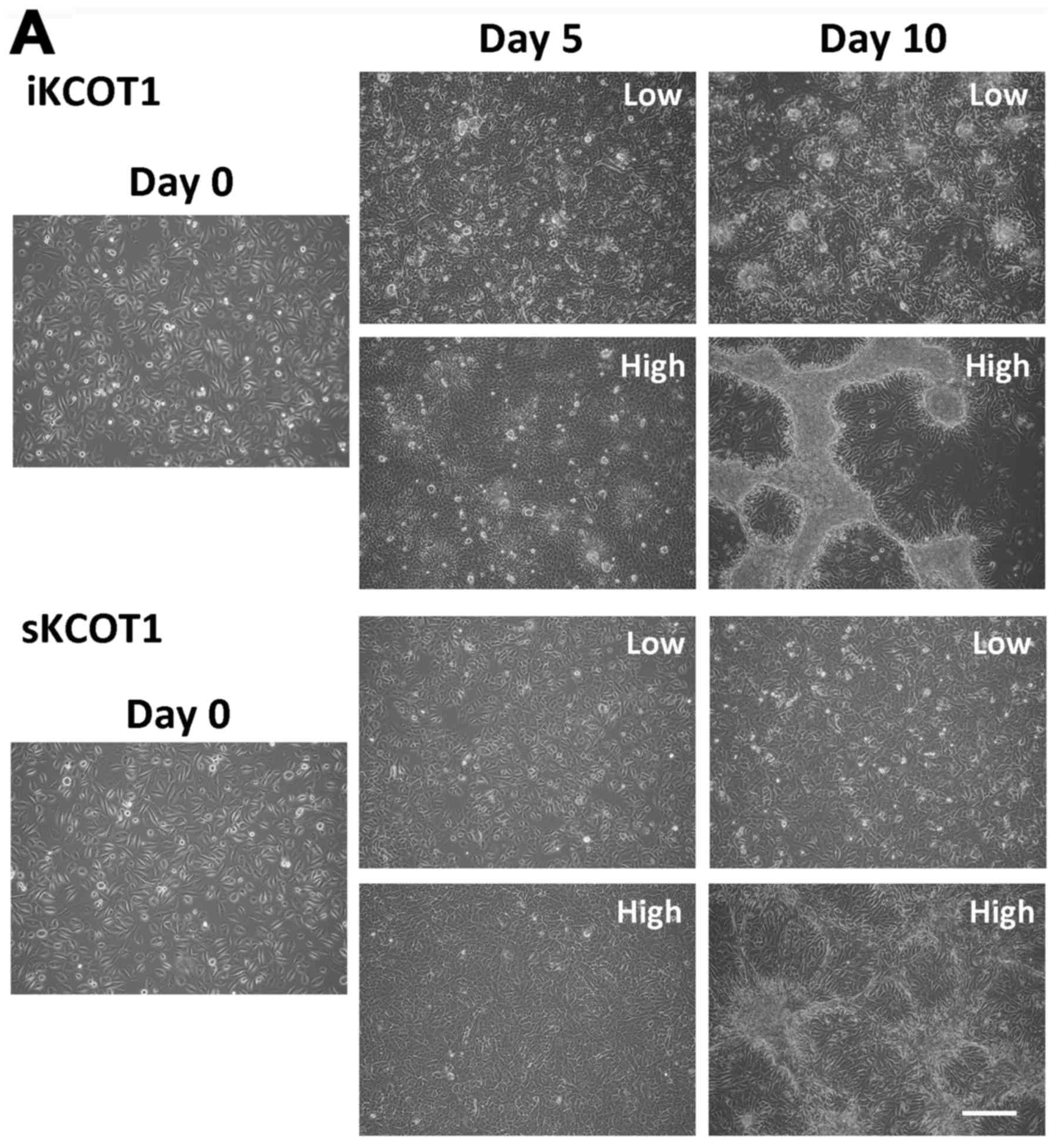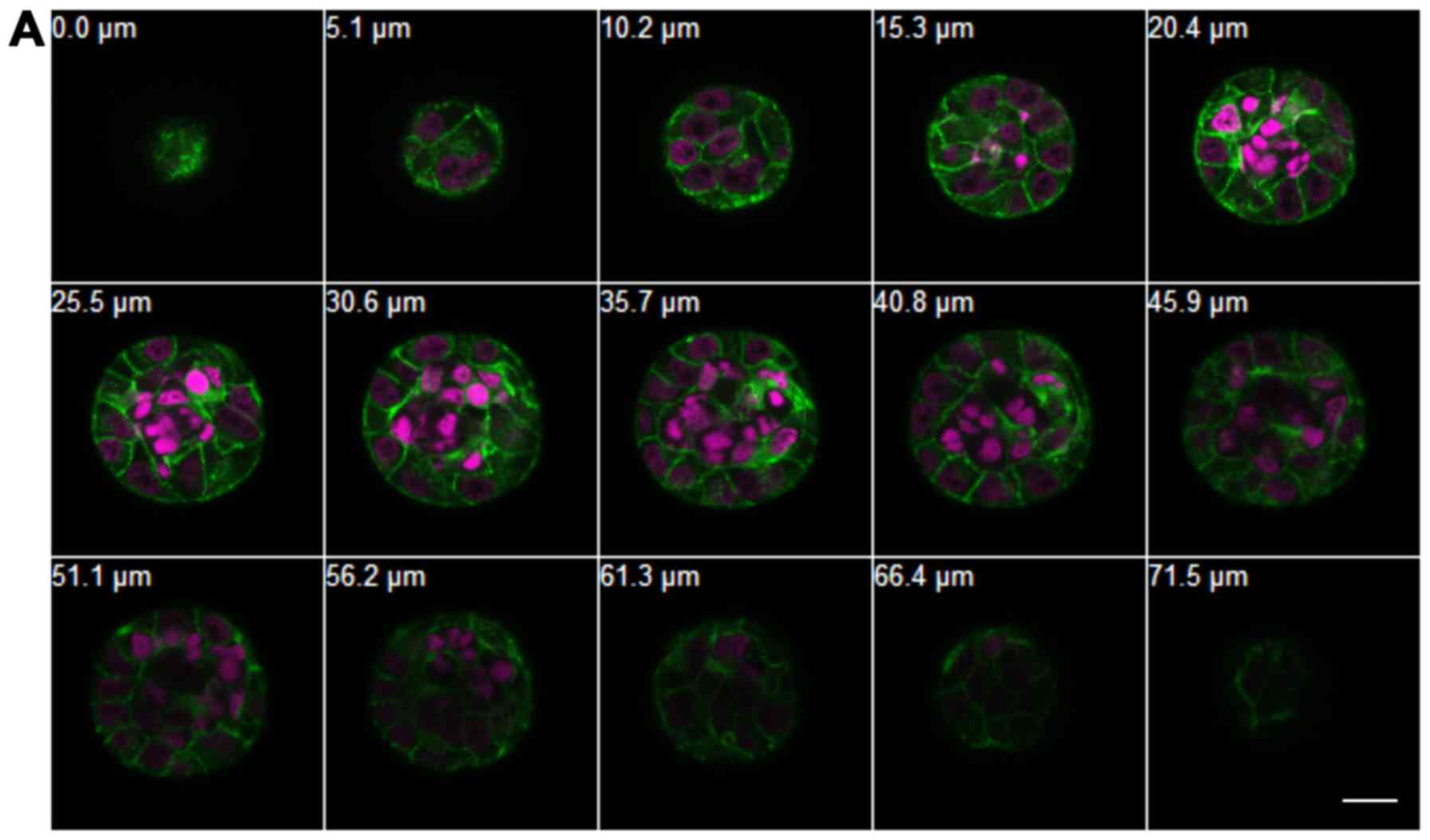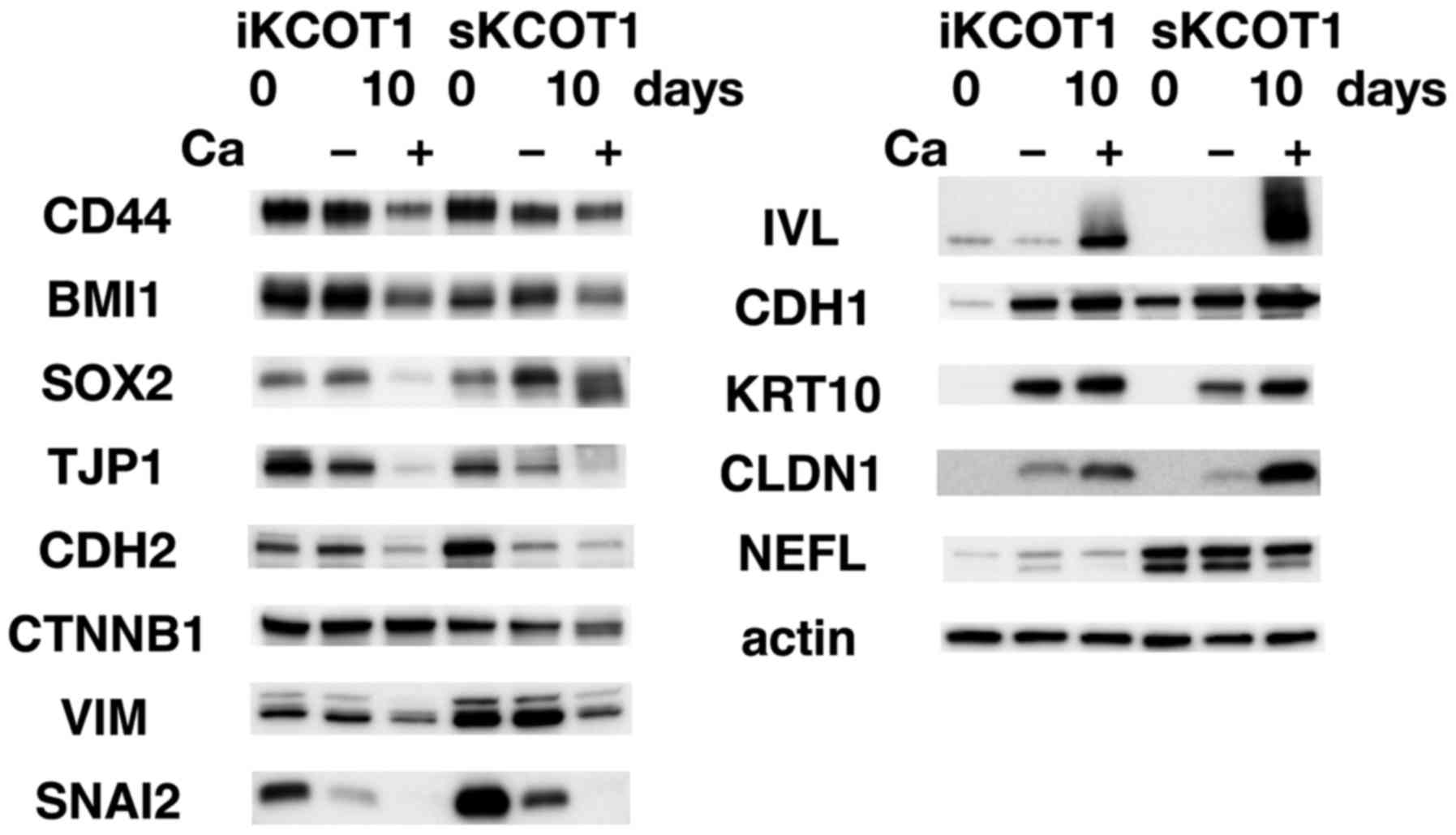|
1
|
Morgan TA, Burton CC and Qian F: A
retrospective review of treatment of the odontogenic keratocyst. J
Oral Maxillofac Surg. 63:635–639. 2005. View Article : Google Scholar : PubMed/NCBI
|
|
2
|
Philipsen HP and Reichart PA:
Classification of odontogenic tumours. A historical review J Oral
Pathol Med. 35:525–529. 2006. View Article : Google Scholar
|
|
3
|
Shear M: The aggressive nature of the
odontogenic keratocyst: Is it a benign cystic neoplasm? Part 1.
Clinical and early experimental evidence of aggressive behaviour.
Oral Oncol. 38:219–226. 2002. View Article : Google Scholar : PubMed/NCBI
|
|
4
|
González-Alva P, Tanaka A, Oku Y,
Yoshizawa D, Itoh S, Sakashita H, Ide F, Tajima Y and Kusama K:
Keratocystic odontogenic tumor: A retrospective study of 183 cases.
J Oral Sci. 50:205–212. 2008. View Article : Google Scholar : PubMed/NCBI
|
|
5
|
Cohen MM Jr: Nevoid basal cell carcinoma
syndrome: Molecular biology and new hypotheses. Int J Oral
Maxillofac Surg. 28:216–223. 1999. View Article : Google Scholar : PubMed/NCBI
|
|
6
|
Kimonis VE, Goldstein AM, Pastakia B, Yang
ML, Kase R, DiGiovanna JJ, Bale AE and Bale SJ: Clinical
manifestations in 105 persons with nevoid basal cell carcinoma
syndrome. Am J Med Genet. 69:299–308. 1997. View Article : Google Scholar : PubMed/NCBI
|
|
7
|
Johnson RL, Rothman AL, Xie J, Goodrich
LV, Bare JW, Bonifas JM, Quinn AG, Myers RM, Cox DR, Epstein EH Jr,
et al: Human homolog of patched, a candidate gene for the basal
cell nevus syndrome. Science. 272:1668–1671. 1996. View Article : Google Scholar : PubMed/NCBI
|
|
8
|
Ingham PW, Nakano Y and Seger C:
Mechanisms and functions of Hedgehog signalling across the metazoa.
Nat Rev Genet. 12:393–406. 2011. View
Article : Google Scholar : PubMed/NCBI
|
|
9
|
Wicking C, Shanley S, Smyth I, Gillies S,
Negus K, Graham S, Suthers G, Haites N, Edwards M, Wainwright B, et
al: Most germ-line mutations in the nevoid basal cell carcinoma
syndrome lead to a premature termination of the PATCHED protein,
and no genotype-phenotype correlations are evident. Am J Hum Genet.
60:21–26. 1997.PubMed/NCBI
|
|
10
|
Fujii M, Noguchi K, Urade M, Muraki Y,
Moridera K, Kishimoto H, Hashimoto-Tamaoki T and Nakano Y: Novel
PTCH1 mutations in Japanese Nevoid basal cell carcinoma syndrome
patients: Two familial and three sporadic cases including the first
Japanese patient with medulloblastoma. J Hum Genet. 56:277–283.
2011. View Article : Google Scholar : PubMed/NCBI
|
|
11
|
Qu J, Yu F, Hong Y, Guo Y, Sun L, Li X,
Zhang J, Zhang H, Shi R, Chen F, et al: Underestimated PTCH1
mutation rate in sporadic keratocystic odontogenic tumors. Oral
Oncol. 51:40–45. 2015. View Article : Google Scholar
|
|
12
|
Kimi K, Ohki K, Kumamoto H, Kondo M,
Taniguchi Y, Tanigami A and Ooya K: Immunohistochemical and genetic
analysis of mandibular cysts in heterozygous ptc knockout mice. J
Oral Pathol Med. 32:108–113. 2003. View Article : Google Scholar : PubMed/NCBI
|
|
13
|
Svärd J, Heby-Henricson K, Persson-Lek M,
Rozell B, Lauth M, Bergström A, Ericson J, Toftgård R and Teglund
S: Genetic elimination of suppressor of fused reveals an essential
repressor function in the mammalian hedgehog signaling pathway. Dev
Cell. 10:187–197. 2006. View Article : Google Scholar : PubMed/NCBI
|
|
14
|
Grachtchouk M, Liu J, Wang A, Wei L,
Bichakjian CK, Garlick J, Paulino AF, Giordano T and Dlugosz AA:
Odontogenic keratocysts arise from quiescent epithelial rests and
are associated with deregulated hedgehog signaling in mice and
humans. Am J Pathol. 169:806–814. 2006. View Article : Google Scholar : PubMed/NCBI
|
|
15
|
Ren C, Amm HM, DeVilliers P, Wu Y,
Deatherage JR, Liu Z and MacDougall M: Targeting the sonic hedgehog
pathway in keratocystic odontogenic tumor. J Biol Chem.
287:27117–27125. 2012. View Article : Google Scholar : PubMed/NCBI
|
|
16
|
Liu X, Ory V, Chapman S, Yuan H, Albanese
C, Kallakury B, Timofeeva OA, Nealon C, Dakic A, Simic V, et al:
ROCK inhibitor and feeder cells induce the conditional
reprogramming of epithelial cells. Am J Pathol. 180:599–607. 2012.
View Article : Google Scholar :
|
|
17
|
Sasaki R, Narisawa-Saito M, Yugawa T,
Fujita M, Tashiro H, Katabuchi H and Kiyono T: Oncogenic
transformation of human ovarian surface epithelial cells with
defined cellular oncogenes. Carcinogenesis. 30:423–431. 2009.
View Article : Google Scholar : PubMed/NCBI
|
|
18
|
Yamamura M, Noguchi K, Nakano Y, Segawa E,
Zushi Y, Takaoka K, Kishimoto H, Hashimoto-Tamaoki T and Urade M:
Functional analysis of Zyxin in cell migration and invasive
potential of oral squamous cell carcinoma cells. Int J Oncol.
42:873–880. 2013. View Article : Google Scholar : PubMed/NCBI
|
|
19
|
Athar M, Li C, Kim AL, Spiegelman VS and
Bickers DR: Sonic hedgehog signaling in Basal cell nevus syndrome.
Cancer Res. 74:4967–4975. 2014. View Article : Google Scholar : PubMed/NCBI
|
|
20
|
Jimbo T, Masumoto K, Urita Y, Takayasu H,
Shinkai T, Uesugi T, Gotoh C, Sakamoto N, Sasaki T, Oto T, et al:
Nevoid basal cell carcinoma syndrome with a unilateral giant
ovarian fibroma in a Japanese 6-year-old girl. Eur J Pediatr.
173:667–670. 2014. View Article : Google Scholar
|
|
21
|
Takahashi C, Kanazawa N, Yoshikawa Y,
Yoshikawa R, Saitoh Y, Chiyo H, Tanizawa T, Hashimoto-Tamaoki T and
Nakano Y: Germline PTCH1 mutations in Japanese basal cell nevus
syndrome patients. J Hum Genet. 54:403–408. 2009. View Article : Google Scholar : PubMed/NCBI
|
|
22
|
Knudson AG Jr: Mutation and cancer:
Statistical study of retinoblastoma. Proc Natl Acad Sci USA.
68:820–823. 1971. View Article : Google Scholar : PubMed/NCBI
|
|
23
|
Levanat S, Gorlin RJ, Fallet S, Johnson
DR, Fantasia JE and Bale AE: A two-hit model for developmental
defects in Gorlin syndrome. Nat Genet. 12:85–87. 1996. View Article : Google Scholar : PubMed/NCBI
|
|
24
|
Barreto DC, Gomez RS, Bale AE, Boson WL
and De Marco L: PTCH gene mutations in odontogenic keratocysts. J
Dent Res. 79:1418–1422. 2000. View Article : Google Scholar : PubMed/NCBI
|
|
25
|
Pan S, Dong Q, Sun LS and Li TJ:
Mechanisms of inactivation of PTCH1 gene in nevoid basal cell
carcinoma syndrome: modification of the two-hit hypothesis. Clin
Cancer Res. 16:442–450. 2010. View Article : Google Scholar : PubMed/NCBI
|
|
26
|
Xu XL, Singh HP, Wang L, Qi DL, Poulos BK,
Abramson DH, Jhanwar SC and Cobrinik D: Rb suppresses human
coneprecursor-derived retinoblastoma tumours. Nature. 514:385–388.
2014. View Article : Google Scholar : PubMed/NCBI
|
|
27
|
Gao Y, Yang G, Weng T, Du J, Wang X, Zhou
J, Wang S and Yang X: Disruption of Smad4 in odontoblasts causes
multiple keratocystic odontogenic tumors and tooth malformation in
mice. Mol Cell Biol. 29:5941–5951. 2009. View Article : Google Scholar : PubMed/NCBI
|
|
28
|
Rincon JC, Young WG and Bartold PM: The
epithelial cell rests of Malassez - a role in periodontal
regeneration? J Periodontal Res. 41:245–252. 2006. View Article : Google Scholar : PubMed/NCBI
|
|
29
|
Xiong J, Mrozik K, Gronthos S and Bartold
PM: Epithelial cell rests of Malassez contain unique stem cell
populations capable of undergoing epithelial-mesenchymal
transition. Stem Cells Dev. 21:2012–2025. 2012. View Article : Google Scholar
|
|
30
|
Heikinheimo K, Kurppa KJ, Laiho A,
Peltonen S, Berdal A, Bouattour A, Ruhin B, Catón J, Thesleff I,
Leivo I, et al: Early dental epithelial transcription factors
distinguish ameloblastoma from keratocystic odontogenic tumor. J
Dent Res. 94:101–111. 2015. View Article : Google Scholar
|


















